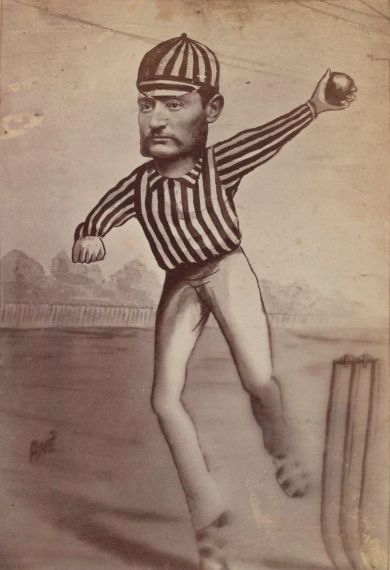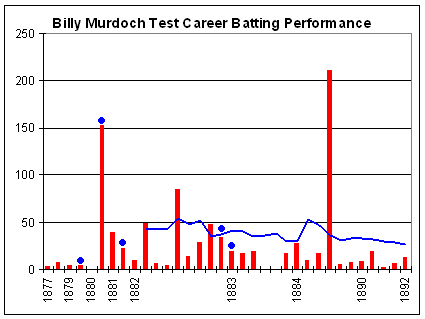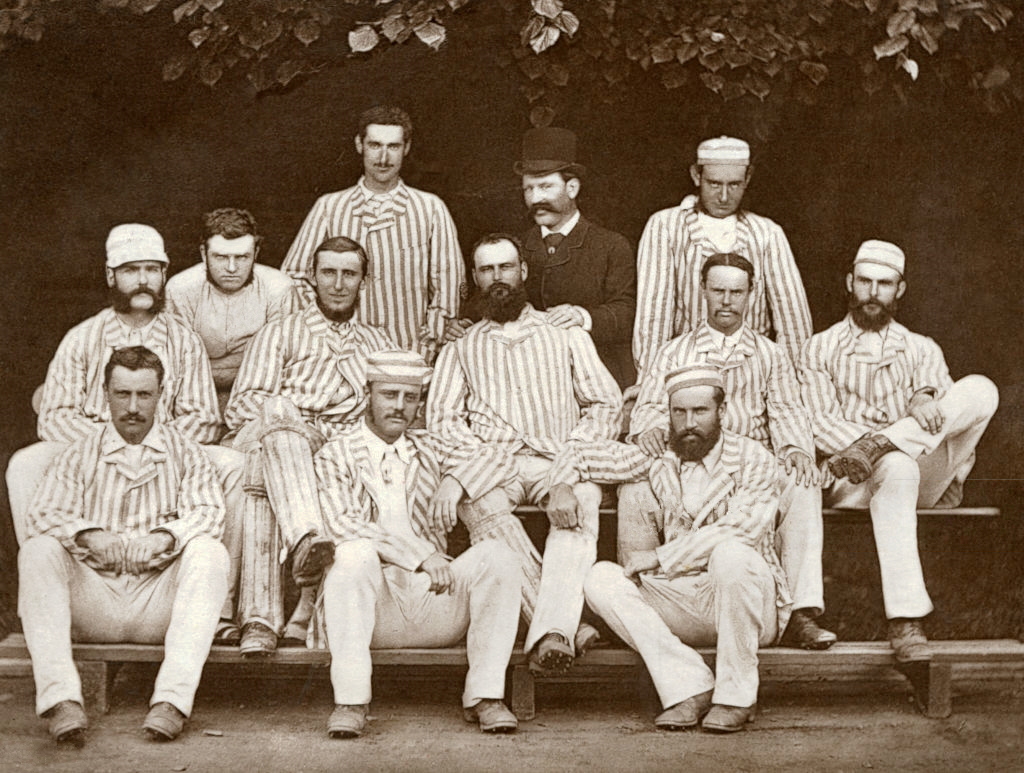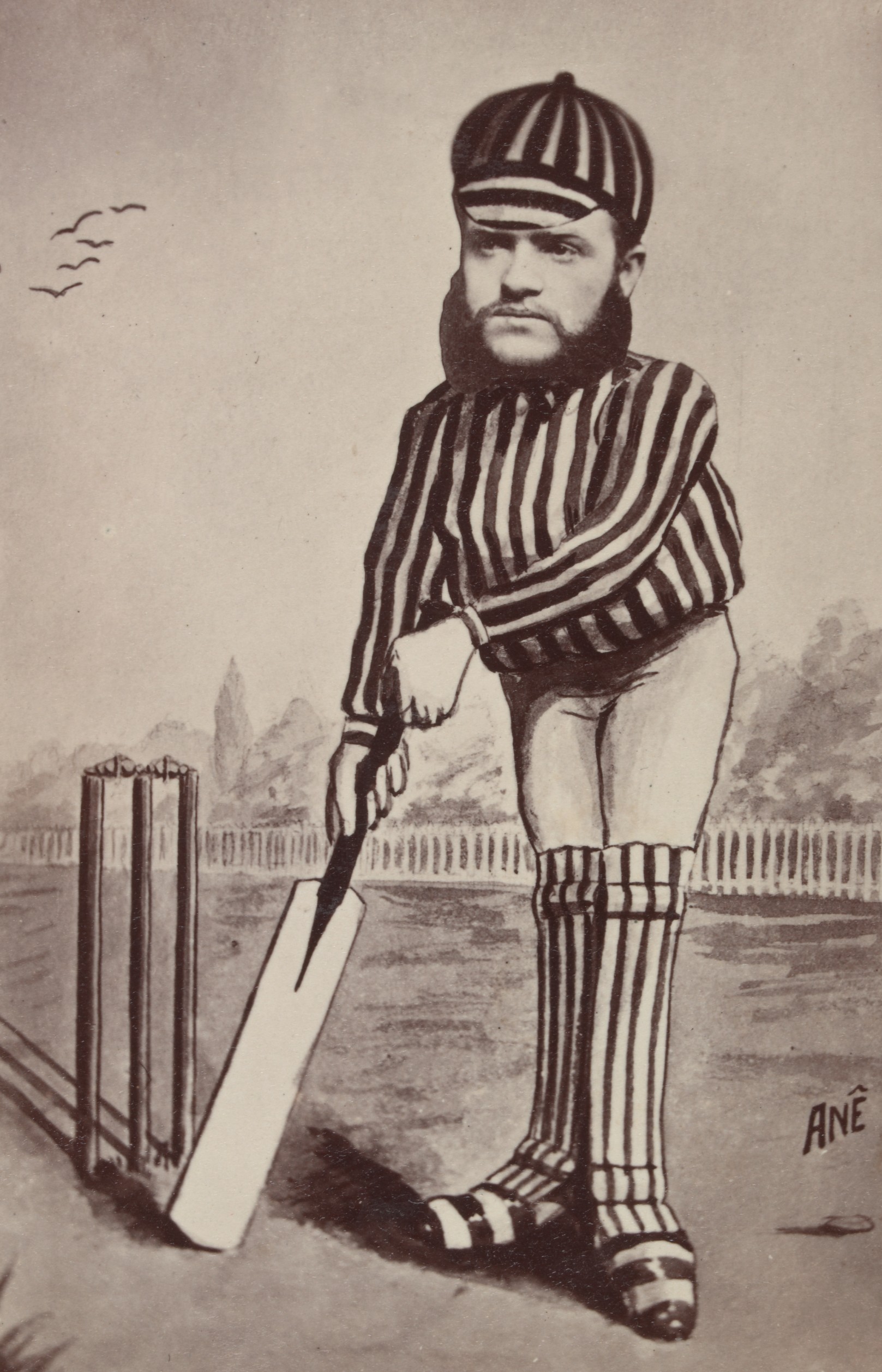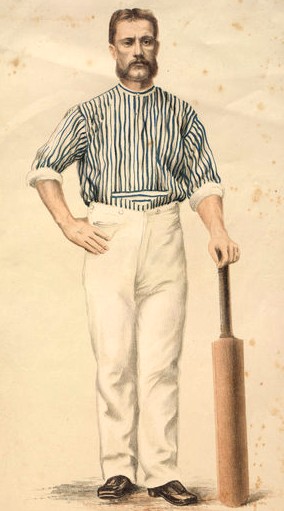|
Robertson Oval
The Robertson Oval is a multi-use sports facility in Wagga Wagga, New South Wales, Australia. It primarily hosts cricket, Australian rules football and rugby league matches. A grass embankment runs around three-quarters of the oval with a 350-seat grandstand and social club on western side of the ground. Plans are in place for a 3–5 million dollar redevelopment of the arena. As the oval is located in the heart of Wagga Wagga CBD, the AFL and New South Wales Cricket Association will use the oval after redevelopment preferring it to other regional venues. Teams * Wagga Tigers - Aussie Rules, Riverina Football League *Hosts matches for various teams from the Wagga Cricket League NOTE: The playing surface is currently too small to host top-class cricket and AFL matches, something the redevelopment will address. History A cricket match between Wagga Wagga and an Australian XI on 8 March 1878 is the first recorded First-Grade cricket match at the Robertson Oval. 22 men of ... [...More Info...] [...Related Items...] OR: [Wikipedia] [Google] [Baidu] |
Wagga Wagga, New South Wales
Wagga Wagga (; informally called Wagga) is a major regional city in the Riverina region of New South Wales, Australia. Straddling the Murrumbidgee River, with an urban population of more than 56,000 as of June 2018, Wagga Wagga is the state's largest inland city, and is an important agricultural, military, and transport hub of Australia. The ninth largest inland city in Australia, Wagga Wagga is located midway between the two largest cities in Australia—Sydney and Melbourne—and is the major regional centre for the Riverina and South West Slopes regions. The central business district is focused around the commercial and recreational grid bounded by Best and Tarcutta Streets and the Murrumbidgee River and the Sturt Highway. The main shopping street of Wagga is Baylis Street which becomes Fitzmaurice Street at the northern end. The city is accessible from Sydney via the Sturt and Hume Highways, Adelaide via the Sturt Highway and Albury and Melbourne via the Olympic Hig ... [...More Info...] [...Related Items...] OR: [Wikipedia] [Google] [Baidu] |
Dave Gregory (cricketer)
David William Gregory (15 April 1845 – 4 August 1919) was an Australian cricketer. A right-handed batsman, Gregory was the first Australian national cricket captain, leading the side for the first three recognised Test matches between England and Australia in March and April 1877 and January 1879. Gregory was also the captain of the New South Wales team, notably during the Sydney Riot of 1879 when he rebelled against an unpopular decision by Victorian umpire George Coulthard during a game against the touring English team. Gregory was part of a large cricketing family: his father, Edward William Gregory, was a "capable cricketer" with eight sons, five of whom played for New South Wales in international or intercolonial matches between 1861 and 84; in all, twenty of Edward William Gregory's descendants represented New South Wales in cricket and other sports.Rae Else-Mitchell'Gregory, David William (1845–1919)' ''Australian Dictionary of Biography'', National Centre of Biogr ... [...More Info...] [...Related Items...] OR: [Wikipedia] [Google] [Baidu] |
Frank Allan
Francis Erskine Allan (2 December 1849 – 9 February 1917) was an Australian cricketer who represented Victoria in first-class intercolonial matches and made one Test appearance for Australia. A tall, wiry left-arm medium pacer known by the sobriquet "The Bowler of a Century", Allan possessed great spin and a peculiar swerve which he claimed to have developed through his use of boomerangs and waddies growing up amongst Aborigines in the Victorian bush. He was also given the nickname "Kangaroo" because he would jump like a kangaroo to celebrate taking a wicket. Allan began a lifelong association with the South Melbourne Cricket Club in 1866 when he played for the side in his first ever match. Winning the club bowling average that season, he was quickly recognised as a natural of unusual ability, and in 1867, aged seventeen, made his first-class debut for Victoria against New South Wales, taking a first innings five-wicket haul in a performance described by William Hammer ... [...More Info...] [...Related Items...] OR: [Wikipedia] [Google] [Baidu] |
Harry Boyle (cricketer)
Henry Frederick "Harry" Boyle (10 December 1847 – 21 November 1907) was a leading Australian Test cricketer of the late 1870s and early 1880s. Boyle played for Victoria and had the distinction of visiting England with the three earliest Australian representative touring teams, in 1878, 1880 and 1882. The slightly reticent Boyle was chosen as captain for the 1880 tour but a shipboard team meeting voted to replace him with the more outgoing Billy Murdoch before their arrival. An outstanding medium-pacer, Boyle's greatest strengths were said to be the accuracy of his deliveries and his ability to probe a batsman's weaknesses. His bowling was considered to be particularly effective under English conditions. His achievements with the ball were often overshadowed by the exploits of his brilliant team mate, "The Demon Bowler", Fred Spofforth. He was an exceptionally good close-in fielder, too, and a brave if limited batsman. In all, he played 12 Tests, taking 32 wickets at an aver ... [...More Info...] [...Related Items...] OR: [Wikipedia] [Google] [Baidu] |
Jack Blackham
John McCarthy Blackham (11 May 1854 – 28 December 1932) was a Test cricketer who played for Victoria and Australia. A specialist wicket-keeper, Blackham played in the first Test match at the Melbourne Cricket Ground in March 1877 and the famous Ashes Test match of 1882. Such was his skill in the position that he revolutionised the art of wicket-keeping and was known as the "prince of wicket-keepers". Late in his career, he captained the Australian team. Early life Blackham was born in the inner-Melbourne suburb of Fitzroy North, the son of newsagent Frederick Kane Blackham and his wife Lucinda (née McCarthy). Blackham became a bank clerk, and held a position in the Colonial Bank of Australasia for many years. It is said that his thick dark beard, perceived then as a sign of an equable and reliable nature, reassured his customers. His brother-in-law was George Eugene "Joey" Palmer. Cricket career Blackham was included in the first eleven of the Carlton Cricket Club as a ba ... [...More Info...] [...Related Items...] OR: [Wikipedia] [Google] [Baidu] |
Billy Murdoch
William Lloyd Murdoch (18 October 1854 – 18 February 1911) was an Australian cricketer who captained the Australian national side in 16 Test matches between 1880 and 1890. This included four tours of England, one of which, in 1882, gave rise to The Ashes. In 2019 Murdoch was inducted into the Australian Cricket Hall of Fame. Although Victorian-born, Murdoch was raised in Sydney, and played his Australian domestic cricket for New South Wales, making his first-class debut in 1875. His Test debut came in 1877, in what was retrospectively classed as the second Test match to be played. Murdoch began his career as a wicket-keeper, but at Test level kept wicket only once, with Jack Blackham being preferred. As a batsman, Murdoch scored both the first double century in Test cricket (211 against England in 1884) and the first triple century in Australian domestic cricket (321 against Victoria in 1882). In later years, he settled in England, playing county cricket for Sussex (18 ... [...More Info...] [...Related Items...] OR: [Wikipedia] [Google] [Baidu] |
Tom Garrett
Thomas William Garrett (26 July 1858 – 6 August 1943) was an early Australian Test cricketer and, later, a distinguished public servant. Early life Tom Garrett was the second son of a newspaper proprietor and politician who bore the same name. His mother, Mary Ann Creagan, was his father's first wife. Garrett was educated at Newington College (1867–1872), while the school was still at Newington House, in the Sydney suburb of Silverwater. His ability as a cricketer and sprinter was encouraged by the assistant master Joseph Coates. Public service career In 1873 he matriculated to the University of Sydney and attended lectures for several terms. In January of the next year, his father secured for him a clerkship in the New South Wales Department of Lands. He transferred to the New South Wales Supreme Court in 1876 and was admitted to practice law as a solicitor on 25 February 1882. He became registrar of probates in 1890, curator of intestate estates as well in 1896, and ... [...More Info...] [...Related Items...] OR: [Wikipedia] [Google] [Baidu] |
George Bailey (cricketer, Born 1853)
George Herbert Bailey (29 October 1853 – 10 October 1926) was an Australian cricketer who played first-class cricket for Tasmania from 1873 to 1893 and for the Australian team in England and North America in 1878. Early life and career Bailey was born in Colombo where his father, Canon Brooke Bailey, was a military chaplain and inspector of schools. He went to school at Lichfield Grammar School in England and Elizabeth College, Guernsey, where he captained the first eleven for two years. After he left school he followed his father to Tasmania in 1870. In 1872 he began his employment with the Union Bank of Australia. ''The Mercury'' (Hobart), 11 October 1926, p. 6. He played for the Launceston Cricket Club and made his first appearance in the biannual Tasmanian intrastate matches between North and South in 1871–72. He took 6 for 52 opening the bowling for North in 1872–73, a match in which he also opened the batting. He made his first-class debut for Tasmania a few days l ... [...More Info...] [...Related Items...] OR: [Wikipedia] [Google] [Baidu] |
Tom Horan
Thomas Patrick Horan (8 March 1854 – 16 April 1916) was an Australian cricketer who played for Victoria and Australia, and later became an esteemed cricket journalist under the pen name "Felix". The first of only two players born in Ireland to play Test cricket for Australia, Horan was the leading batsman in the colony of Victoria during the pioneering years of international cricket. He played for Australia in the game against England subsequently designated as the first Test match, before touring England with the first representative Australian team, in 1878. Four years later, he toured England for the second time and played in the famed Ashes Test match at The Oval. An aggressive middle-order batsman renowned for his leg-side play, Horan supplemented his batting by bowling medium-pace in the roundarm style common to his era, and once captured six wickets in a Test match innings. During a season disrupted by financial disputes and a strike by leading players, he captaine ... [...More Info...] [...Related Items...] OR: [Wikipedia] [Google] [Baidu] |
Alec Bannerman
Alexander (usually "Alick"; also "Alec") Chalmers Bannerman (21 March 1854 – 19 September 1924) was an Australian cricketer who played in 28 Test matches between 1879 and 1893. Bannerman made his Test debut at Melbourne in 1879, joining brother Charles, his senior by eight years, in the Australian team. "Little Alick" was a small man, his lack of size matched only by his frequent lack of run-scoring. Whereas Charles was an attacking stroke-maker, Alick was ultra-defensive, almost strokeless at times. His nickname, in contrast to that of his brother (the "Pocket Hercules"), was "Barn Door". A.G. Moyes provides this piece of Bannerman imagery in ''Australian Batsmen'': "At times the crowd found him as wearisome to the flesh as fleas in a warm bed." ''Wisden Cricketers' Almanack'' dubbed him "the most famous of all stone-walling batsmen; his patience was inexhaustible." In his first Test, Alick top-scored (as Charles had memorably done on his debut in 1876/77, hitting 165) w ... [...More Info...] [...Related Items...] OR: [Wikipedia] [Google] [Baidu] |
Charles Bannerman
Charles Bannerman (3 July 1851 – 20 August 1930) was an English-born Australian cricketer. A right-handed batsman, he represented Australia in three Test matches between 1877 and 1879. At the domestic level, he played for the New South Wales cricket team. Later, he became an umpire. He is most famous for facing the first ball ever bowled in Test cricket, scoring the first run in Test cricket and making the first Test century. This innings of 165 remains the highest individual share of a completed team innings in Test cricket history, despite more than 2,000 Test matches being played since that first Test. Ironically in another first, he was forced to retire hurt; when a ball broke his finger. Early life Bannerman was born in Woolwich, Kent, England to William Bannerman and his wife Margaret. Not long afterwards the family migrated to New South Wales, Australia, where he joined the Warwick Cricket Club in Sydney. At the club he was trained by William Caffyn, a former Surrey ... [...More Info...] [...Related Items...] OR: [Wikipedia] [Google] [Baidu] |
2015 ICC World Cup
The 2015 ICC Cricket World Cup was the 11th Cricket World Cup, a quadrennial One Day International (ODI) cricket tournament contested by men's national teams and organised by the International Cricket Council (ICC). It was jointly hosted by Australia and New Zealand from 14 February to 29 March 2015, and was won by Australia. This was the second time the tournament was held in Australia and New Zealand, the first having been the 1992 Cricket World Cup. The tournament consisted of 14 teams, which were split into two pools of seven, with each team playing every other team in their pool once. The top four teams from each pool progressed to the knockout stage, which consisted of quarter-finals, semi-finals and a final. The final was between the co-hosts Australia and New Zealand. Australia won by seven wickets, to win their fifth Cricket World Cup. The total attendance was 1,016,420, with an average of 21,175 per game. The final at the Melbourne Cricket Ground had a crowd of 93 ... [...More Info...] [...Related Items...] OR: [Wikipedia] [Google] [Baidu] |

.jpg)
